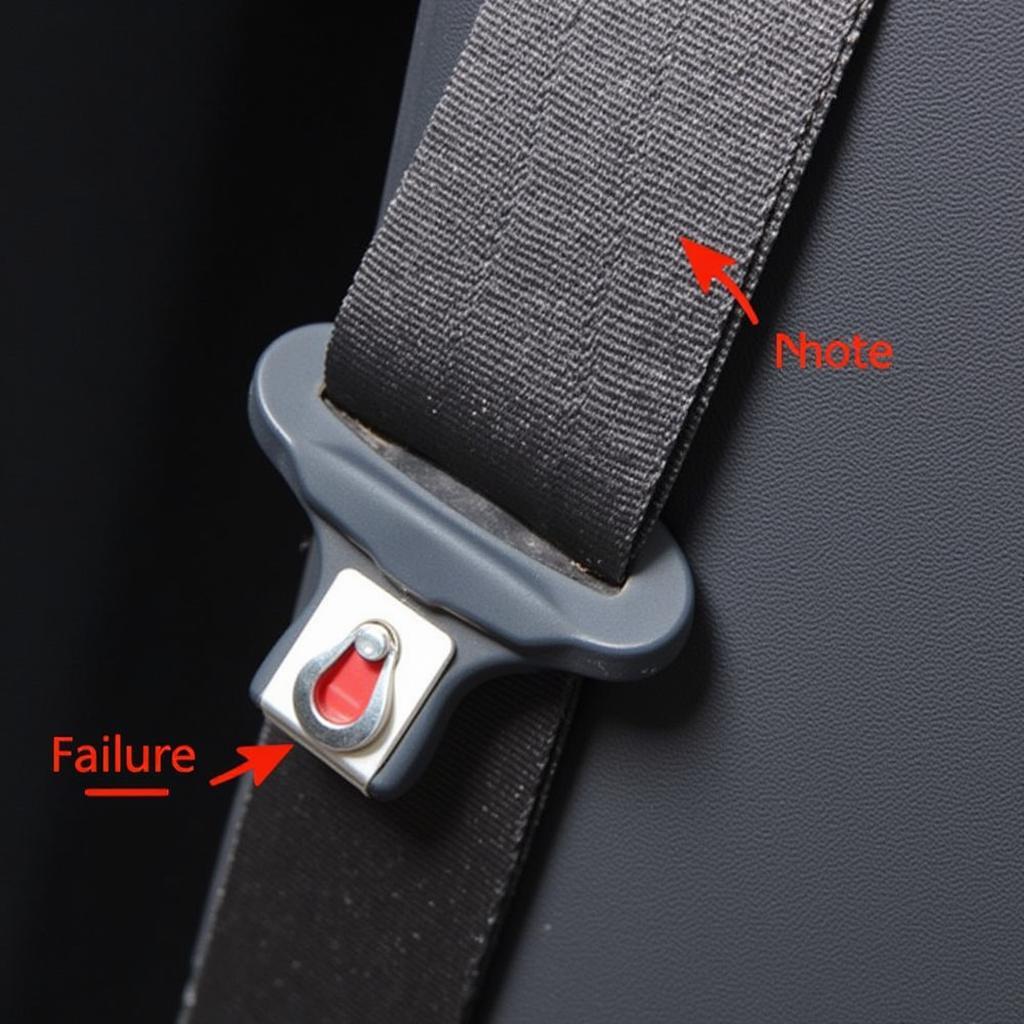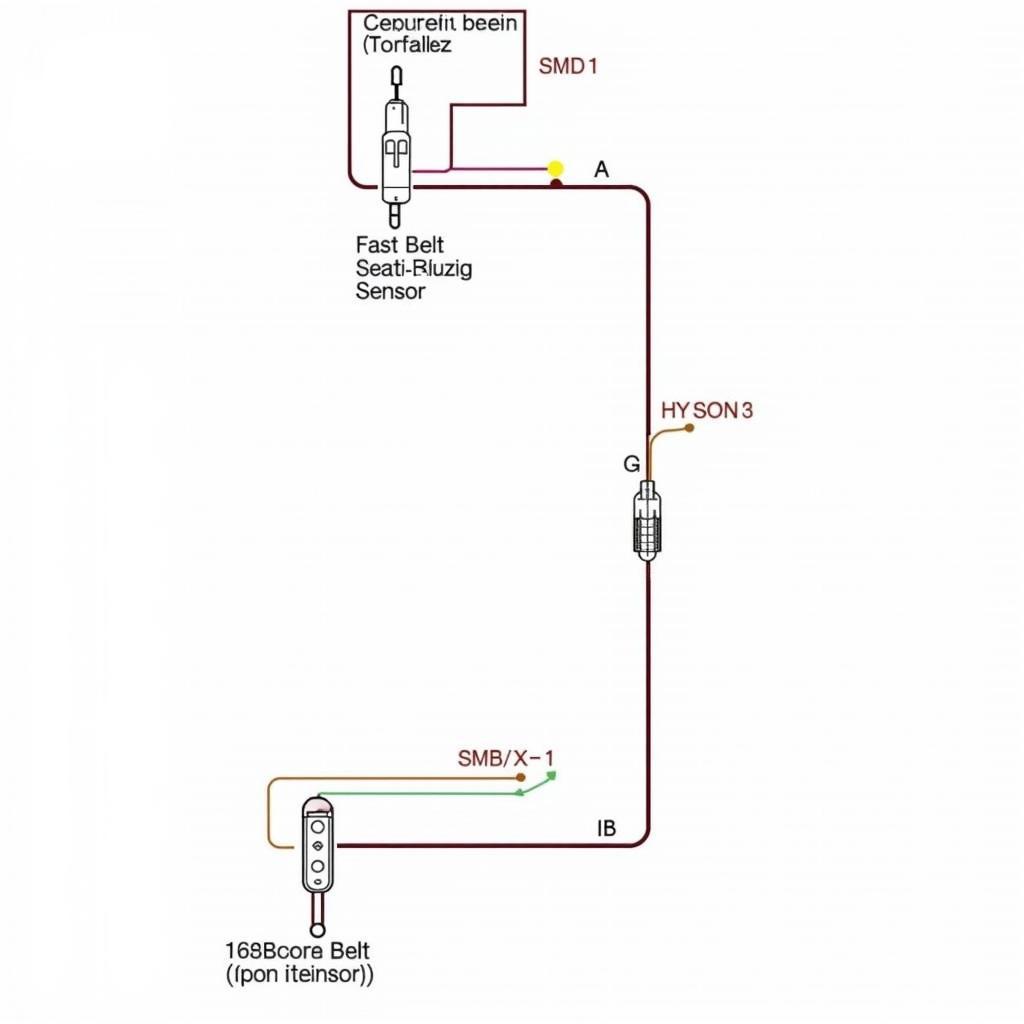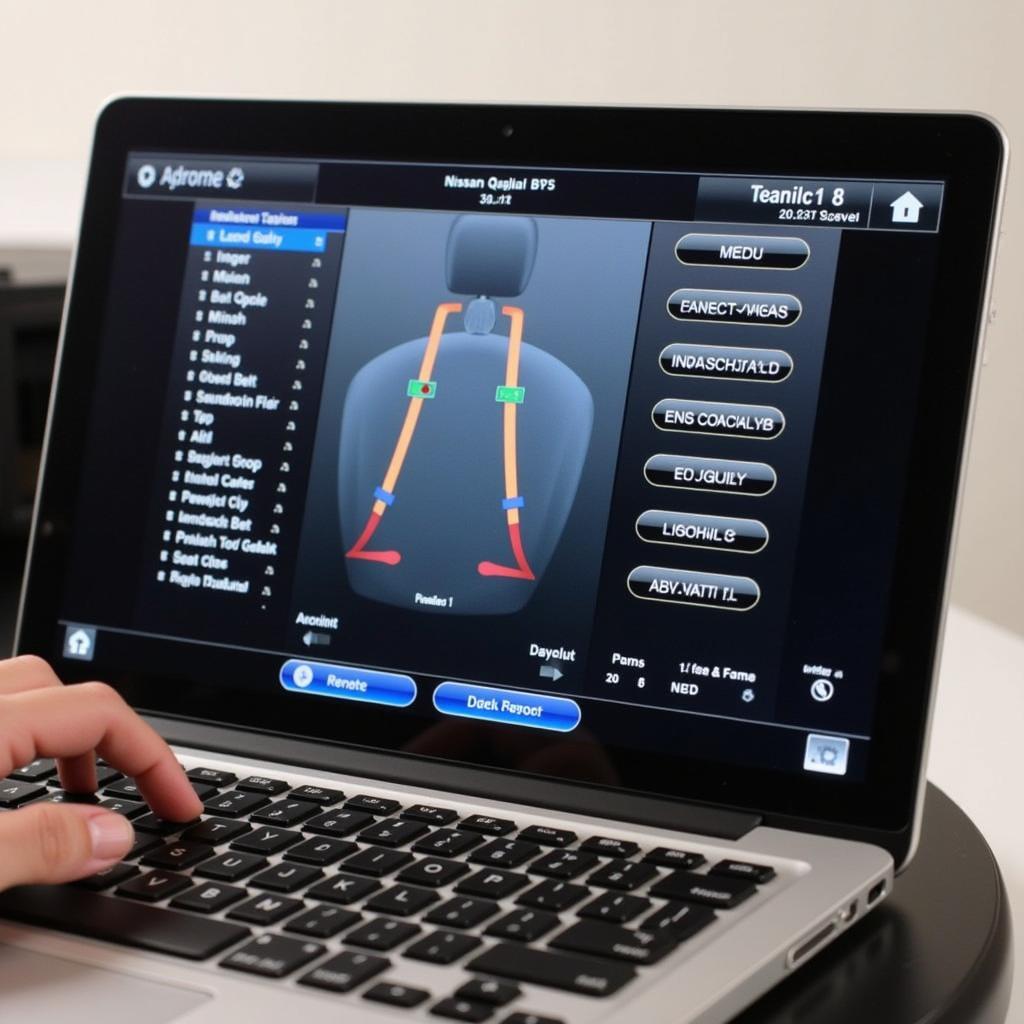The 2011 Nissan Qashqai seat belt warning light is a crucial safety feature, designed to alert you if a seat belt isn’t fastened. However, sometimes this light can illuminate even when all occupants are buckled up correctly. This can be frustrating and concerning. This article will guide you through common causes of a persistent seat belt warning light in your 2011 Nissan Qashqai, offer practical troubleshooting steps, and discuss solutions, including remote software diagnosis and programming.
Common Causes of a Persistent Seat Belt Warning Light
Several factors can trigger a persistent seat belt warning light in your 2011 Nissan Qashqai. These range from simple issues like a faulty sensor to more complex problems requiring professional diagnosis.
- Faulty Seat Belt Buckle/Sensor: The most common culprit is a malfunctioning seat belt buckle or its associated sensor. Over time, these components can wear out, become dirty, or suffer damage, leading to inaccurate readings.
- Wiring Issues: Damaged or corroded wiring within the seat belt system can disrupt the signal transmission, causing the warning light to stay on. This often occurs due to wear and tear or exposure to moisture.
- Seat Belt Pretensioner Malfunction: The seat belt pretensioner is a safety device that tightens the seat belt during a collision. A faulty pretensioner can also trigger the warning light.
- Software Glitches: Occasionally, software glitches within the vehicle’s control module can cause the seat belt warning system to malfunction.
- Occupancy Sensor Issues (If equipped): Some Qashqai models have occupancy sensors in the passenger seat to detect if a passenger is present and activate the airbag system accordingly. A faulty occupancy sensor can sometimes interfere with the seat belt warning system.
 Nissan Qashqai 2011 Seat Belt Buckle and Sensor
Nissan Qashqai 2011 Seat Belt Buckle and Sensor
Troubleshooting the Seat Belt Warning Light
Before heading to a mechanic, you can try some simple troubleshooting steps:
- Check all seat belts: Ensure all seat belts are properly fastened, including the rear seats. Sometimes a slightly loose buckle can trigger the light.
- Inspect the buckles and wiring: Visually examine the seat belt buckles and wiring for any signs of damage, dirt, or corrosion.
- Try cleaning the buckles: Use a compressed air can or a small brush to clean the buckle connectors. Dust and debris can sometimes interfere with the sensor.
- Restart the vehicle: A simple reboot can occasionally resolve temporary software glitches.
 Nissan Qashqai 2011 Seat Belt Wiring Diagram
Nissan Qashqai 2011 Seat Belt Wiring Diagram
Remote Software Diagnosis and Programming: A Modern Solution
If the troubleshooting steps don’t resolve the issue, remote software diagnosis and programming can be a highly effective solution. This innovative approach allows skilled technicians to access your vehicle’s systems remotely and diagnose the problem without requiring a physical visit to a workshop.
How Remote Diagnosis Works
Using specialized software and diagnostic tools, technicians can connect to your vehicle’s onboard computer via a secure connection. This allows them to:
- Read fault codes: Identify the specific error codes triggering the seat belt warning light.
- Analyze sensor data: Evaluate the data from the seat belt sensors to pinpoint the exact malfunction.
- Perform software updates: Install the latest software updates to address any known bugs or glitches affecting the seat belt system.
- Reprogram modules: In some cases, reprogramming the seat belt control module can resolve persistent issues.
“Remote diagnosis offers significant advantages in terms of speed and convenience. It’s often a much faster and more efficient way to diagnose complex electrical issues,” says John Smith, Senior Automotive Electrical Engineer at AutoTech Solutions.
When to Seek Professional Help
If you’ve tried the basic troubleshooting steps and the problem persists, it’s best to consult a qualified automotive electrician. They have the expertise and specialized equipment to diagnose and repair more complex issues within the seat belt system, including wiring problems, pretensioner malfunctions, and software related issues.
 Nissan Qashqai 2011 Remote Diagnostics in Progress
Nissan Qashqai 2011 Remote Diagnostics in Progress
Conclusion
The persistent seat belt warning light in your 2011 Nissan Qashqai can be a nuisance, but understanding the common causes and troubleshooting steps can help you resolve the issue quickly. Remember, remote software diagnosis and programming offers a modern and efficient solution for diagnosing and fixing complex electrical problems, often avoiding a trip to the mechanic. If the problem persists after trying these steps, seeking professional help is recommended to ensure the proper functioning of your vehicle’s safety systems, including the crucial 2011 Nissan Qashqai seat belt warning light.
FAQ
- Can I disable the seat belt warning light? Disabling safety features is generally not recommended. The warning light serves an important safety function.
- How much does it cost to fix a seat belt warning light issue? The cost varies depending on the cause and the required repairs. It can range from a simple cleaning to more expensive repairs involving sensor or module replacement.
- Is it safe to drive with the seat belt warning light on? While you can still drive, it’s important to address the issue as soon as possible. A malfunctioning seat belt system can compromise your safety in a collision.
- Can a faulty airbag sensor cause the seat belt light to come on? In some cases, a faulty occupancy sensor can indirectly affect the seat belt warning system.
- How long does remote diagnosis usually take? Remote diagnosis typically takes less time than a traditional visit to a mechanic, often within an hour or two.
- Do I need special equipment for remote diagnosis? You’ll need a stable internet connection and potentially a diagnostic adapter depending on the specific system used. The remote technician will guide you through the process.
- Is remote programming safe for my car? Yes, when performed by qualified technicians using certified software and secure connections, remote programming is safe and effective. “Remote programming allows us to apply software updates and fix issues without any physical intervention, ensuring the integrity of your vehicle’s systems,” explains Maria Garcia, Lead Software Engineer at Car Diagnostics Ltd.

